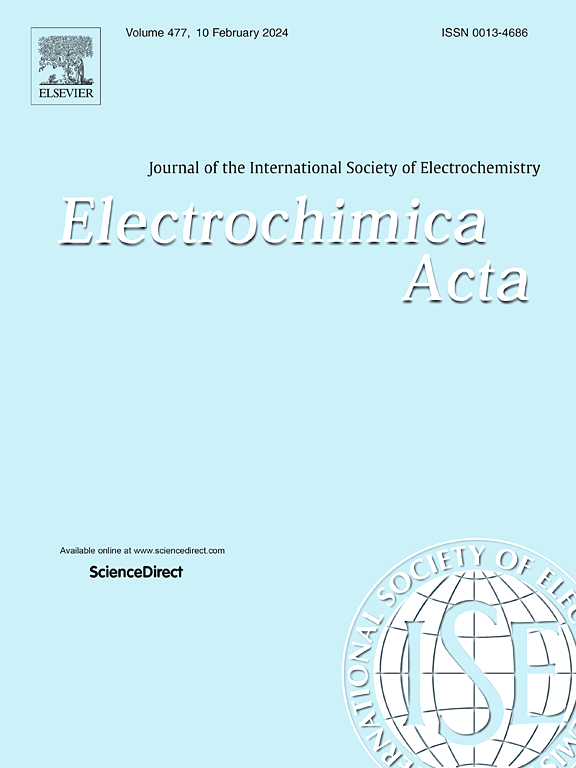Machine learning assisted classification and interpretation of EIS data with experimental demonstration for chemical conversion coatings on Mg alloys
IF 5.5
3区 材料科学
Q1 ELECTROCHEMISTRY
引用次数: 0
Abstract
Magnesium and its alloys, promising for structural applications, have significant corrosion concerns. Chemical conversion coating (CCC) is a cost-effective, scalable, and environment-friendly method to address this issue. EIS is a powerful technique frequently used in various applications, including CCCs, to model diverse electrode-electrolyte interface processes through equivalent circuits (EC). The traditional EC approach is tedious, requires human experience and imparts subjectivity. Machine Learning (ML) strategies automate the process of EC classification, identify complex patterns, reduce subjectivity and analysis time. This study focuses on the ML classification of ECs in CCCs, covering almost all realistic coating conditions and processes. We have used both linear (PCA: Principal Component Analysis and LDA: Linear Discriminant Analysis for interpretation and dimensional reductions; Logistic Regression for classification) and non-linear ML models (Naïve Bayes, Random Forest, XG Boost, Gradient Boost and 1D-CNN: all for seven-class EC classification). We observed that PCA reduced 213-dimensional feature space to 8 PCs, retaining 99% variance, whereas ∼89% of the top 10 features in LDA belong to low-frequency regions. The performance of ML models was evaluated by diverse metrics: confusion matrix, F1-score, precision, recall, Shapley Additive Explanations (SHAP), and Area under Receiver Operating Characteristic Curve (AUC). Overall, 1D-CNN model performed the best with an accuracy ∼86%, mean AUC ∼0.98, and top-2 accuracy ∼96%. From SHAP analysis, we found low-frequency phase measurements are critical for the 1D-CNN model's decision-making, signifying the importance of slow electrochemical processes. Finally, we validated best ML model with experimental data and found 1D-CNN classifier has an average R2∼0.96.


通过对镁合金化学转化涂层的实验演示,机器学习辅助了EIS数据的分类和解释
镁及其合金在结构应用方面前景广阔,但存在严重的腐蚀问题。化学转化涂层(CCC)是解决这一问题的一种具有成本效益、可扩展且环保的方法。EIS 是一种功能强大的技术,常用于包括 CCC 在内的各种应用中,通过等效电路 (EC) 模拟各种电极-电解质界面过程。传统的等效电路(EC)方法非常繁琐,需要人的经验和主观性。机器学习(ML)策略可使等效电路分类过程自动化,识别复杂模式,减少主观性和分析时间。本研究的重点是对 CCC 中的导电率进行 ML 分类,几乎涵盖了所有现实的涂层条件和工艺。我们使用了线性(PCA:主成分分析法和 LDA:线性判别分析法)方法进行解释:线性判别分析用于解释和降维;逻辑回归用于分类)和非线性 ML 模型(Naïve Bayes、Random Forest、XG Boost、Gradient Boost 和 1D-CNN:均用于七级 EC 分类)。我们观察到,PCA 将 213 维特征空间缩减为 8 个 PC,保留了 99% 的方差,而 LDA 中前 10 个特征中有 89% 属于低频区域。混淆矩阵、F1-分数、精确度、召回率、Shapley Additive Explanations (SHAP) 和 Receiver Operating Characteristic Curve (AUC) 等不同指标对 ML 模型的性能进行了评估。总体而言,1D-CNN 模型表现最佳,准确率为 86%,平均 AUC 为 0.98,前 2 名的准确率为 96%。通过 SHAP 分析,我们发现低频相位测量对 1D-CNN 模型的决策至关重要,这表明缓慢电化学过程的重要性。最后,我们用实验数据验证了最佳 ML 模型,发现 1D-CNN 分类器的平均 R2 ∼ 0.96。
本文章由计算机程序翻译,如有差异,请以英文原文为准。
求助全文
约1分钟内获得全文
求助全文
来源期刊

Electrochimica Acta
工程技术-电化学
CiteScore
11.30
自引率
6.10%
发文量
1634
审稿时长
41 days
期刊介绍:
Electrochimica Acta is an international journal. It is intended for the publication of both original work and reviews in the field of electrochemistry. Electrochemistry should be interpreted to mean any of the research fields covered by the Divisions of the International Society of Electrochemistry listed below, as well as emerging scientific domains covered by ISE New Topics Committee.
 求助内容:
求助内容: 应助结果提醒方式:
应助结果提醒方式:


